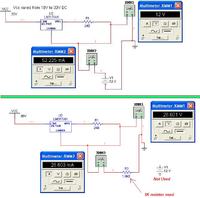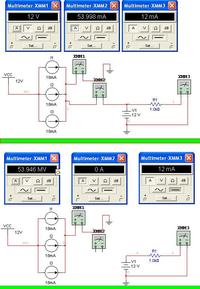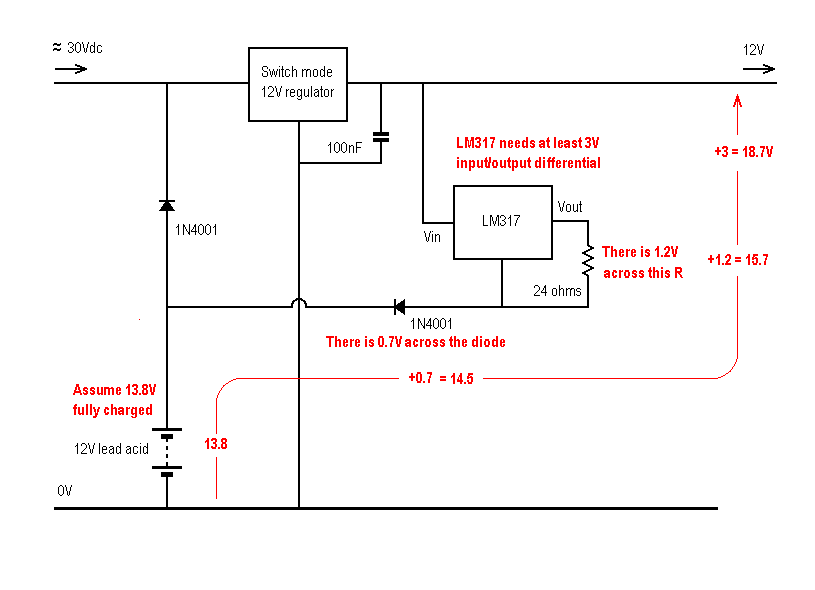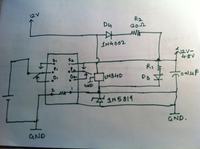angryboy
Newbie level 4
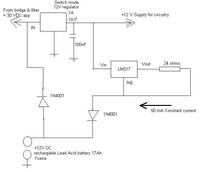
I am trying to use a 12V DC battery 17Ah Lead Acid from Yuasa with an existing mains operated circuitry. I have attached the circuit diagram that I am trying to implement. Circuit would be operated using mains under normal condition while backup battery is still connected. When operating on mains, back-up battery would receive 50mA constant current charge using LM317 (circuit obtained from LM317 datasheet). In case of mains failure, backup battery kicks-in. Are there any limitations or potential hazards with this circuitry. Would a 1/4Watt 24 ohms resistor enough for this circuit? Please advise!
